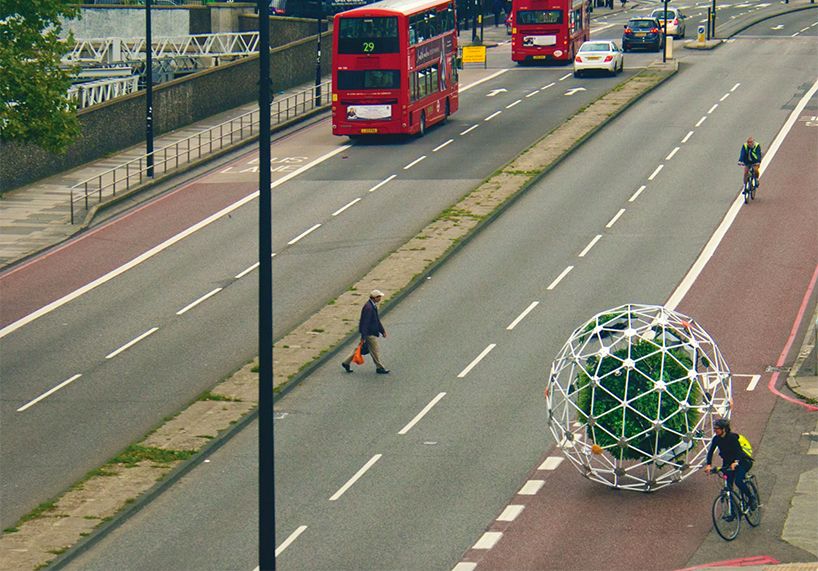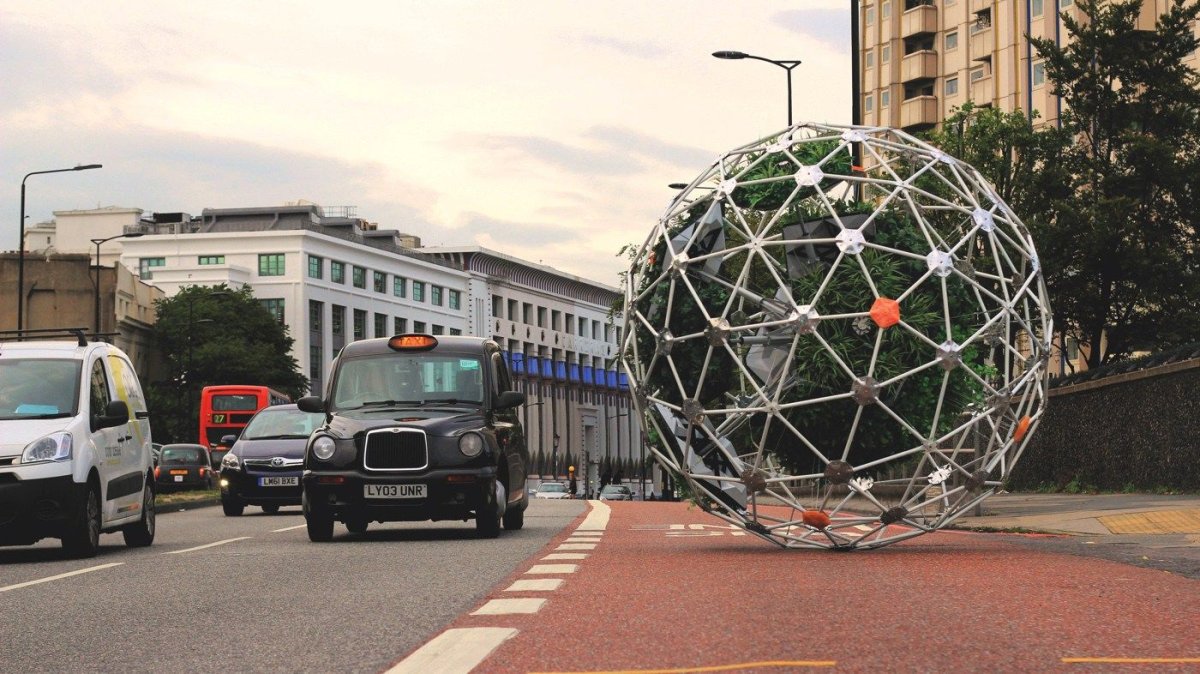
Move over self-driving cars, a new autonomous entity is hitting the roads in the form of a self-driving garden.
Green-fingered architects at University College London have developed a half-garden, half-machine, as part of a project within the Interactive Architecture Lab that is designed to explore new ways in which people can interact with nature.
"The idea is inspired by ecological consciousness," Ruairi Glynn, director of the Interactive Architecture Lab, tells Newsweek. "Plants have a primitive form of intelligence; they can sense light and sound and can form memories.
"What we wanted to do was measure a plant's response to an environment and to amplify it. So we came up with a robot design driven by plants."

The Hortum Machina, B., machine is described by its creators as "a new cybernetic lifeform" and uses an exoskeleton to transport 12 garden modules containing plants.
Electro-chemical signals given off by the plants control the orientation and mobility of the machine, allowing it to maneuver itself around a city or park in order to find the most suitable microclimates, avoiding environments that might be toxic for it.
"Hortum machina, B. rolls because plants become electro-chemically stimulated by their surrounding environment, whether if it's a lighting transition, a difference in temperature, humidity or pollution," says William Victor Camilleri, one of two architects who worked on the project.
Victor Camilleri adds: "Prompted by the plants, if the sensors note a considerable amount of light, the sphere rotates to accommodate other gardens, if it's an overcast sky, it will look for new spots of sun, and if they note an all-round darkness, then it stops its movements for the day."
Unless the mechanical garden moves out into a busy road, there is little chance that it will pose a danger to the public. Its top speed is about one meter per minute, meaning it doesn't so much roll around a city as creep.
"To make one step, the sphere takes around 30 seconds to shift its centre of gravity enough to roll," says Danilo Sampaio, co-developer of the machine.
"Once the step is complete, the sphere needs to determine its base position, close up and then if it wishes to move again start pushing out the garden modules to change its balance again."
The Hortum Machina, B., is still in the prototyping stage of development but Glynn hopes if the reception it receives from the public is positive then it could be introduced to parks in London and beyond.
Uncommon Knowledge
Newsweek is committed to challenging conventional wisdom and finding connections in the search for common ground.
Newsweek is committed to challenging conventional wisdom and finding connections in the search for common ground.
About the writer
Anthony Cuthbertson is a staff writer at Newsweek, based in London.
Anthony's awards include Digital Writer of the Year (Online ... Read more
To read how Newsweek uses AI as a newsroom tool, Click here.








